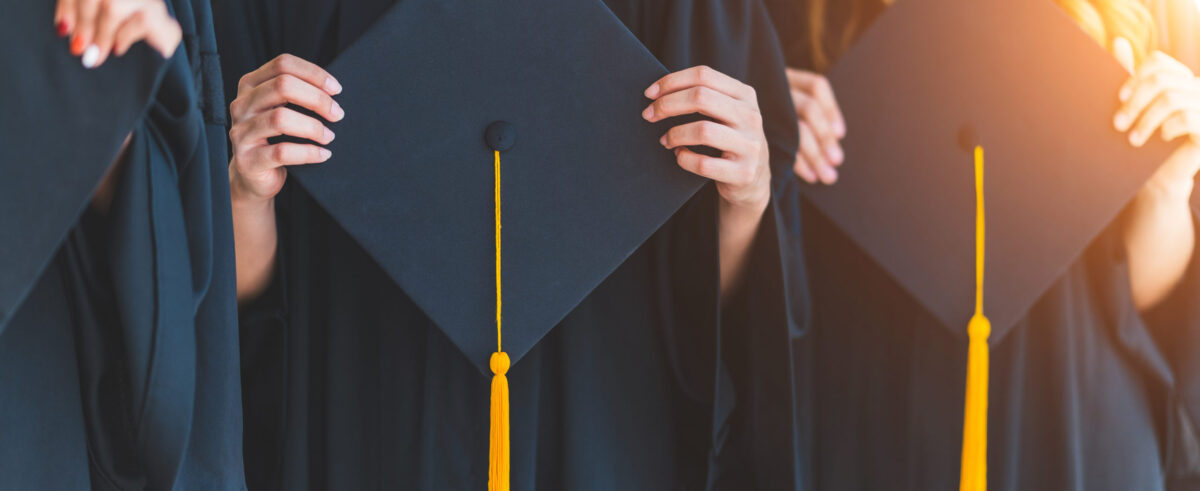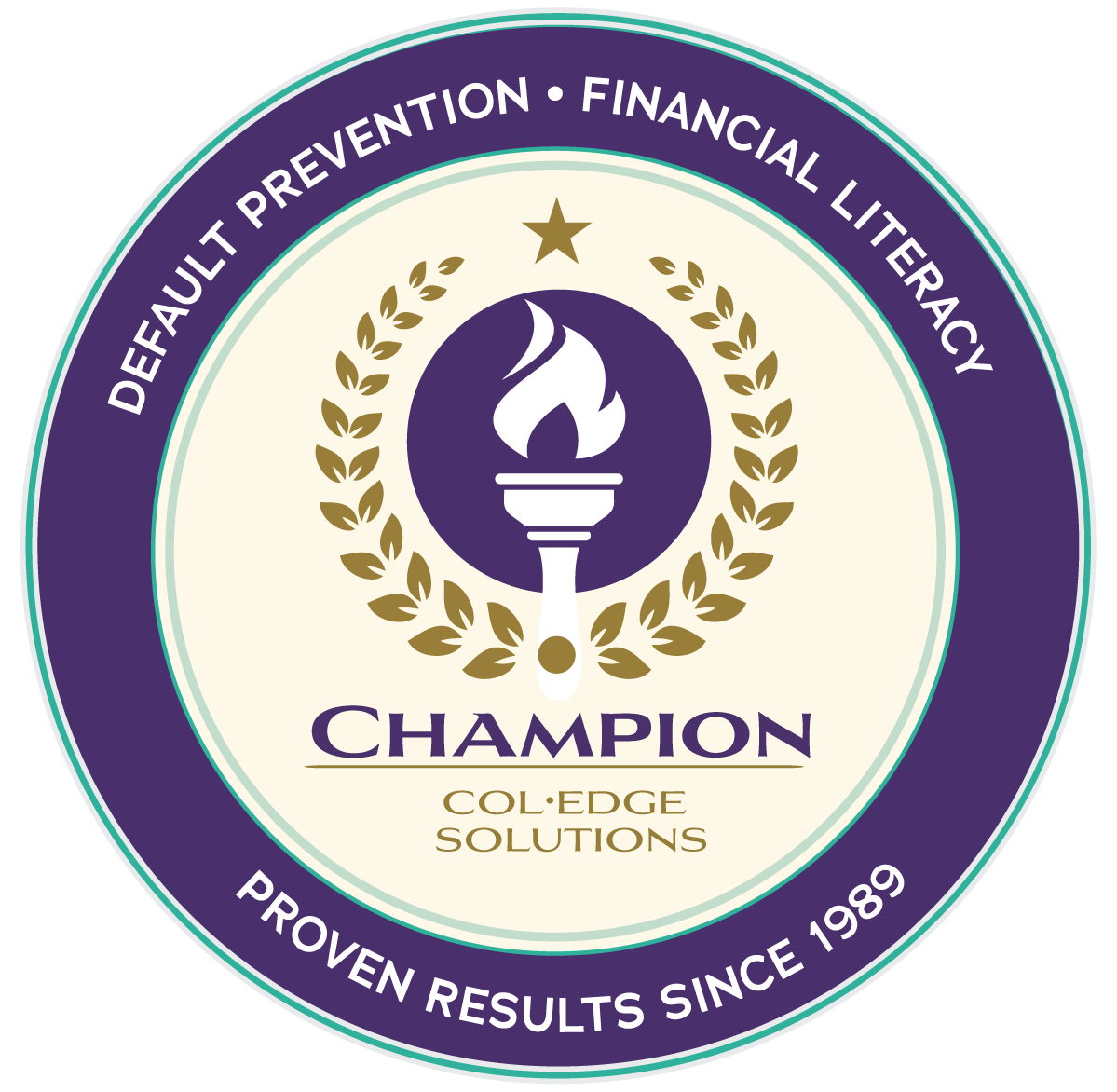Higher Education Has Always Been Political
September 1, 2022
by Mary Lyn Hammer, CEO Champion ColEDGE Solutions, Champion Empowerment Institute

Education has always been subject to political negotiations over funding. Sadly, education laws are often based on funding and not on what will best educate children. Less than 3% of the federal budget goes to education including preschool through college.
STUDENT LOANS: THE REAL DEAL IS THAT HIGHER EDUCATION HAS ALWAYS BEEN A POLITICAL PLATFORM
The Higher Education Act (HEA) was written in 1965 as part of the civil rights movement. HEA provided equal opportunities for higher education to Americans with low incomes which largely consisted of minorities.
HEA funding is part of the domestic discretionary budget meaning the funding is not guaranteed – it must be approved in the federal budget every year. Therefore, education has always been subject to political negotiations over funding. Sadly, education laws are often based on funding and not on what will best educate children. Less than 3% of the federal budget goes to education including preschool through college.
Citizens and schools are eliminated from federal funding eligibility to fit the budget,
not to provide quality education or successful entry into the workforce.
The higher education budget goes through “reauthorization” every few years with six years defined in the 2008 HEA Amendments although Congress rarely reauthorizes the HEA on schedule. The last reauthorization of the Higher Education Act of 1965 occurred in 2008. It was scheduled for reauthorization in 2014 and has still not gone through that process.
Here are the most common steps in the authorization and funding process:
-
- Higher Education Act of 1965 Amendments occur every few years and changes to the existing higher education laws are passed through Congress and signed into law by the President.
- Federal regulations are negotiated and published to define how to implement laws and other directives from the U.S. Department of Education (ED).
- Appropriations (the federal budget) are set to include funding of what the government can actually pay which often doesn’t match what is reauthorized. In other words, just because something is passed into law doesn’t mean it is guaranteed to be funded. For example: In the past, Congress reauthorized $4,600 per eligible student in Pell Grant funding and was able to fund $3,600 per eligible student.
Congress and special interest groups want citizens to believe they are working toward quality education for all; however, lobbyists and big donors mold the quality of education by creating stories around who should be eliminated from the pool of eligible funding options. These politicians and special interest groups manufacture stories and drama to ensure their inclusion in funding while excluding other students or institutions that primarily serve low-income students.
The easiest way to fit budgetary constraints is to eliminate an entire sector of education. The attack against for-profit education has gone on for so long that people believe it to be true when it is not. Widely accepted beliefs about quality education are based on inaccurate reporting by the Department of Education and misinformation put forth by politicians, special interest groups, and main-stream media outlets.
For example, career colleges have been accused of “ripping off students” and “crippling students with outrageous student loan debt” when the proprietary sector of higher education has the highest on-time graduation rates, traditionally over 60%, while the public-school sector traditionally averages 45% on-time graduation rates with the community colleges at the lowest traditional average of 26%. The average student loan balance is significantly lower for similar socio-economic borrowers at proprietary (for-profit) institutions than at public nonprofit institutions. More details can be found in my book, Injustice for All, available at Order Injustice for All – Mary Lyn Hammer.
Interesting Facts about Higher Education and Federal Student Loans
-
- Education funding is a part of the domestic discretionary budget and is subject to political manipulation to fit the budget.
- Student loan payments go into the General Fund, not back into education.
- In 2010, the private lenders were eliminated from the federal student loan program, and citizens were told that this was to save taxpayers money – the program has been more expensive for taxpayers, and Congress had reports that documented this before the Health Care and Education Reconciliation Act (HCER) was passed, and they chose to ignore the truth.
- Since eliminating private federal student loans, taxpayers have funded 100% of all federal student loans. When these loans are “forgiven,” it is Americans’ hard-earned tax dollars that are given away.
- In tandem with transitioning to 100% direct student loans, Obama signed an executive order to expand the Income-Based Repayment Plan. In 2014, the criteria for minimum payments were defined as 10% of discretionary income through an executive order. This puts many student loan borrowers in negative-amortization or in making interest-only payments which means that their debt remains the same or increases.
- ALL interest charged on federal direct student loans is profit to the government and goes into the general fund. In other words, our children’s student loans are paying for government funding. Recent reports stating the student loan pause has cost the government over $300 billion, which is the profit lost by not charging interest since March 2020.
- Under Income-Driven Repayment (IDR), loan forgiveness after 20 or 25 years is a taxable event and may be applied to a student loan balance greater than the original amount borrowed.
THE GOOD, BAD, AND UGLY OF RECENT CHANGES IN STUDENT LOAN REPAYMENT AND FORGIVENESS
As with most federal government actions, everything is not what it seems to be. Based on the available information, here is an assessment of the implications of the repayment pause and loan forgiveness.
Changes are Perceived as Good or Bad Depending on How Your Higher Education was Funded
While many federal student loan borrowers are excited about a portion of their loans being forgiven, many others are frustrated and angry. Millions of Americans have made significant sacrifices to pay for their higher education, and they get no benefits for being responsible. Many people delayed starting a family or buying a home. Based on surveys my company has conducted, many people have emotional and physical trauma from the stress related to high student loan payments. Some contemplate suicide.
Personally, since the birth of my daughter, I have been a single mom, and she is currently a senior in college. I began saving for her college education through a 529 Plan the same year she was born, and that savings has paid for her education. I made sacrifices to save this money because I believe in the benefits of higher education. I also own numerous businesses that were destroyed during COVID. My income is gone, and I will receive no benefit because I paid cash for college. If I hadn’t saved, I would have borrowed student loans to pay for her college for the last 2 years, and I would have gotten loan forgiveness. Where is my benefit from being responsible? Where is my daughter’s benefit from having a responsible parent? These questions are being asked by Americans all over the country.
For those who are eligible for the loan forgiveness on student loans held by the U.S. Department of Education, here are the criteria:
-
- Your annual income must have fallen below $125,000 for individuals or $250,000 for a married couple or heads of households.
- If you received a Pell Grant in college and meet the income criteria, you are eligible for up to $20,000 in student loan forgiveness.
- If you did not receive a Pell Grant in college and you meet the income criteria, you are eligible for up to $10,000 in student loan forgiveness.
- Borrowers are encouraged to apply for loan forgiveness before November 15, 2022, to give the government time to process the application before the loans enter repayment in January 2023.
- Any federal student loan borrowers with Federal Family Education Loan Program (FFELP) loans outstanding can be eligible if they consolidate their loans into the Federal Direct Student Loan Program (FDSLP). While eligibility would not be available otherwise, these borrowers will lose repayment benefits if their loans are not paid in full through this loan forgiveness program.
The Good
-
- For those who are eligible for the new loan forgiveness, you will not be taxed on the loan amount forgiven. Many people who have qualified for loan forgiveness in the past have paid taxes on the benefit. Many who will have loan forgiveness in the future will pay taxes on the benefit.
- For those who are eligible for the new income-driven repayment (IDR) plan, any unpaid interest will be waived. In the past, this “negative amortization” where interest accruing is greater than the interest being paid resulted in the unpaid interest being added to the principal balance (capitalized) and the borrower paid interest on interest.
- Public Service Loan Forgiveness (PSLF) is based on the borrower making 120 consecutive on-time payments. Because the loans have been on pause since March 2020, this “consecutive payment” criteria were interrupted and historically, the borrower must restart the clock for 120 consecutive on-time payments. Changes have been made to compensate for the “pause” and the pause period for these borrowers will be excluded from the cumulative eligibility criteria of the 120 payments. In other words, if the borrower made 8 years of consecutive on-time payments before the COVID pause, there will be 2 years of consecutive on-time payments required to be eligible for PSLF.
- For those with loan balances under $12,000 after 10 years of payments, the balance will be forgiven. A lack of details on this benefit remains regarding:
- Are the criteria based on 10 years of on-time payments?
- Is the $12,000 balance the beginning balance or that which is left after 10 years of payment?
- Will this be a taxable event?
The Bad
-
- States with income taxes can tax the loan amount forgiven even if the federal government doesn’t.
- The FFELP borrowers are ineligible for loan forgiveness unless they consolidate under the FDSLP. These borrowers have been in repayment for a minimum of 12 years so why are they being excluded from forgiveness eligibility unless they refinance their loans? If they consolidate or refinance under FDSLP, they will likely pay more interest and will lose benefits for reducing or delaying their payments.
The Ugly
-
- The “new” IDR plan will increase the amount of income considered to be non-discretionary which will make more borrowers eligible.
- The “new” IDR plan will reduce the required payment to 5% of discretionary income which will lower payments on undergraduate loans. Because the payments will be so low, many of these payments will be interest-only.
- The combination of the criteria for the new IDR plan will make the majority of student loan payments interest only. This means that:
- The criteria include undergraduate loans only. Loans for higher degrees are not eligible.
- For many borrowers, 100% of the payments will be interest and profit to the government.
- The lion’s share of the loan balance will not be reduced by making payments. The balance will be the same or close to the same as the original student loan when the loan is forgiven.
- Loan forgiveness is a taxable event. For most borrowers, if they couldn’t pay a loan off in 10-25 years, they will likely have no means to pay the tax debt on the loan amount forgiven.
- More information is available at https://studentaid.gov/debt-relief-announcement/.
- FFELP loans will only be eligible if the borrower consolidates (refinances) the loans under the FDSLP program. These borrowers have been in repayment for a minimum of 12 years and deserve the loan forgiveness more so than those with new loans that have never been paid down. When a borrower consolidates, the interest rate is a “weighted average” of the loans included in the consolidation. Because the loans have been paid for years, most of the loan payment at this point is principal so consolidating will increase the cost of the FFELP loans if the entire loan is not forgiven. For the government, this puts the interest on these loans into the General Fund instead of the lenders’ profits.
Unfortunately, the bottom line is still about politics and income redistribution
while our young adults pay the price for irresponsible federal spending.
The “Fresh Start” Initiative for Federal Student Loans in Default
ED’s Fresh Start initiative is intended to give defaulted student loan borrowers a second chance however it is not in the best interest of the taxpayers. Historically, most defaulted loans are those where a payment was never made. Many borrowers are paying on the defaulted loans because they have no choice, not because they want to. Maybe the borrowers’ behavior will be different than what I have witnessed as a student loan repayment expert over the last 35 years but that is highly unlikely.
Here’s what we know…
Eligible Loans
-
- Defaulted DFSLP
- Defaulted FFELP Loans (both held and not held by ED)
- Defaulted ED-held Perkins Loans
Ineligible Loans
-
- Defaulted school-held Perkins Loans
- Defaulted Health Education Assistance Loan Program (HEAL) Loans
- Student loans remaining with the U.S. Department of Justice (DOJ)
- FDSLP and commercially held FFELP loans that default after the end of the COVID pause
Benefits (Actual and Perceived)
-
- Borrowers may be eligible for IDR repayment plans with payments as low as $0.
- Borrowers can potentially qualify for PSLF.
- Borrowers who have rehabilitated their defaulted loans and defaulted a second time will be eligible for rehabilitating again under this program. Again, these borrowers are typically paying because they have no choice, not because they want to which puts taxpayers at risk again.
- Borrowers can apply for new federal student loans. Defaulted loan borrowers have always had to “rehabilitate” their defaulted loans by making at least six on-time voluntary payments or paying the debt in full prior to taking out additional loans. Based on my expertise, giving out new loans with no historic criteria for responsible repayment on existing debt is a bad idea.
- Collections activities will be stopped for one year. Since this money belongs to taxpayers and is put into the General Fund for federal spending, it will contribute to inflation and taxpayer burdens.
- Borrowers’ credit reports will be wiped clean for a year, allowing them to qualify for financing they may not otherwise be able to repay. Without payments, the bad credit will return in a year.
In my experience, many of these “benefits” actually set borrowers up
for long-term overborrowing and financial instability.
CONCLUSION
Unfortunately, when it seems too good to be true, it often is. For many, this is an opportunity of a lifetime and for others it is a bitter reality of unfair and unequal treatment. For those who are benefitting, congratulations. Those Americans who worked hard to pay cash for college or to pay back their student loans are left wondering why their hard-earned money is being given to others who are not being held to the same standard of responsibility for their debt.
The defaults should have been reversed years ago for an estimated 403,000 student loan borrowers who were mismanaged by the U.S. Department of Education during the transition to 100% direct loans as documented in my book, Injustice for All. I fought diligently with little to no Congressional support to get their defaults reversed because they went into default while making timely payments on some of their loans while others at different servicers went into default. This is also an opportunity to clean up the bad credit for these people and many others. Don’t miss out on this opportunity because good credit can improve your financial health and provide opportunities otherwise unavailable.
We, as Americans, need to be proactive in standing up for quality education and opportunities for all citizens. If you believe that politicians, regardless of political affiliation, are looking out for the best interest of student loan borrowers, you are sadly mistaken. The truth is that education is just a line item on the federal budget and the interest on student loans is funding for the federal government. Allowing the quality of education in America to continue to decline is not only an injustice for all citizens, it also leaves us vulnerable to opposing world powers. It is time for political rallying for both parties to make changes that benefit all citizens. Let us use this opportunity to create a strong America for generations to come.
Mary Lyn Hammer—Congressional witness, non-federal negotiator and witness for the U.S. Department of Education (DOE), and seasoned education advocate is the entrepreneurial founder, president, and CEO of Champion College Solutions. Her belief that education is the vehicle for making dreams come true has led her into a life-long passionate fight, beginning in 1987, to rectify problems in the higher education industry to ensure future participation for all students. During her career in higher education, she has touched millions of students’ lives through her companies and advocacy. Ms. Hammer’s company offers default prevention for federal and private student loans, job placement verification, skip tracing, consulting services, and custom surveys for students, alumni, and employers. Champion teaches students how to repay loans but does not collect money on behalf of schools.
Ms. Hammer’s accomplishments include numerous state, regional, and national awards and recognitions over the years in both the higher education industry and professional business arenas. She has participated in training sessions and workshops for numerous state, provincial, regional, national, and private associations in the U.S. and Canada in a continuing effort to share her experiences and knowledge. Ms. Hammer has had several hundred articles published in numerous higher education magazines.
so*******@ch****************.com“>Email us to schedule an interview with Ms. Hammer.


